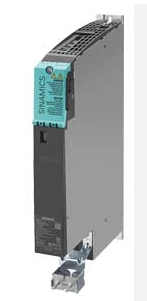With the advent of the Industrial 4.0 era, industrial automation control systems are playing an increasingly important role in various fields. As a giant in the industrial sector, Siemens' 6SL3120 series motor modules have become a vital component of industrial automation control due to their high performance, reliability, and flexibility.
I. Overview of the 6SL3120 Series Motor Modules
The Siemens 6SL3120 series motor modules belong to the SINAMICS S120 series, specifically designed for high-performance industrial automation applications. These motor modules feature advanced characteristics such as optimized pulse patterns, expanded safety integration functions, and DRIVE-CLiQ interfaces, capable of meeting various complex control requirements.

II. Specific Model Parameters and Characteristics
1.6SL3120-1TE21-8AD0
Parameters:
- Input Voltage: 600V DC
- Output Voltage: 3AC 400V
- Output Current: 18A
- Structure: Book-type D
- Cooling Method: Internal Air Cooling
- Weight: Approximately 5kg (specific weight may vary by production batch)
- Includes: DRIVE-CLiQ Cable
Characteristics:
- Provides optimized pulse output suitable for various motor control needs.
- Built-in safety features ensure the reliability and safety of motor operation.
- The DRIVE-CLiQ interface enables high-speed, reliable digital communication, simplifying system debugging and maintenance.
2.6SL3120-1TE21-8AC0
Parameters:
- Applicable Power Range: High-performance range, specific power values to be determined by the specific model.
- Input Voltage: 600V DC
- Output Voltage: 3AC 400V (or similar)
- Structure: Compact design for easy installation.
- Cooling Method: Efficient Air Cooling
Characteristics:
- High-performance frequency conversion control adapts to various load changes, improving production efficiency.
- Compact design saves installation space and reduces system costs.
- Optimized thermal performance ensures the stability and reliability of the module under continuous operation.
3.6SL3120-1TE21-0AD0
Parameters:
- Applicable Motors: Original or compatible motors.
- Rated Output: Determined by the specific model but belongs to the high-performance range of the S120 series.
- Output Voltage: 3AC 400V (or similar)
- Cooling Method: Internal Air Cooling
- Size: Compact design for easy integration into automation systems.
Characteristics:
- Extremely fast speed response meets high-precision position and speed control requirements.
- Flexible field installation methods adapt to various industrial field environments.
- Optimized pulse patterns provide smooth motor control, reducing harmonic losses.
III. Application Scenarios
Siemens 6SL3120 series motor modules, with their high performance and flexibility, are widely used in various industrial automation scenarios.
- Machine Tool Industry: Used to control the feed axes and spindle motors of machine tools, achieving high-precision position and speed control, improving processing accuracy and surface quality.
- Printing and Packaging Industry: Drives the paper feed motors, printing cylinder motors, and various transmission motors of printing machines and packaging machines, ensuring stable operation and precise transmission of equipment.
- Textile Industry: Applied in multi-axis drive systems of textile machinery, such as spinning machines and weaving machines, controlling the coordinated operation of motors on different axes to achieve precise spinning of yarn and high-quality weaving of fabrics.
- Robotics Industry: Controls the individual joint motors of robots in joint drives, enabling flexible movement and precise operation of robots, improving production efficiency.
Product website:
https://www.3splc.com/-6SL3120_c0_ss
Siemens 6SL3120 series motor modules play a significant role in industrial automation control systems with their high performance, reliability, and flexibility. Whether single-axis or dual-axis modules, they all possess advanced features such as optimized pulse patterns, expanded safety integration functions, and DRIVE-CLiQ interfaces. In specific applications, users should select the appropriate model and configuration based on actual needs to achieve optimal control effects and production efficiency.
